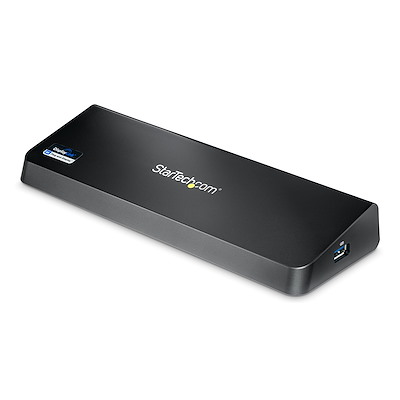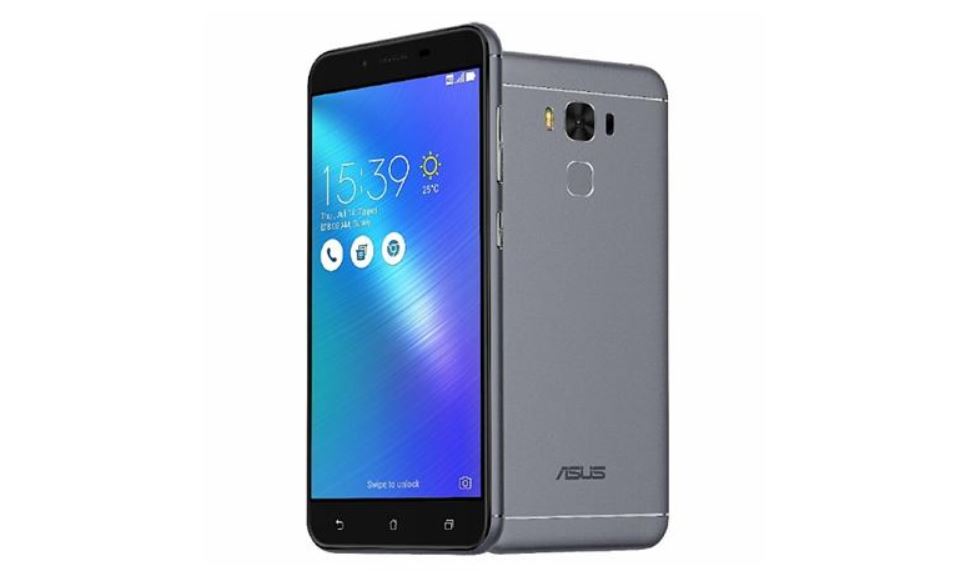
How To Set Up ADB/USB Drivers & Fastboot for Android Devices (Updated 09/23/15)(Video) - So most people won't have to use ADB (Android Debug Bridge) ever, but if you want to learn how or want to get a little more technical with your Android. I have an external segate USB 3.0 hard drive. When i am connecting it to my PC (either to a usb 3/regular port) for some reason it is recognized as a 'USB Attached SCSI (UAS) Mass Storage Device' I installed of course all of my drivers including the chipset. Here is screenshot from device manager.
If you are developing on Windows and want to connect a device for testing,then you need to install the appropriate USB driver. This pageprovides links to the web sites for several original equipment manufacturers (OEMs),where you can download the appropriate USB driver for your device.
If you're developing on Mac OS X or Linux, then you shouldn't need a USB driver.Instead read Using Hardware Devices.
To connect and debug with any of the Google Nexus devices using Windows, youneed to install the Google USB driver.
Install a USB driver
Drivers MAX USB Devices
First, find the appropriate driver for your device from the OEM driverstable below.
Once you've downloaded your USB driver, follow the instructions below to install or upgrade thedriver, based on your version of Windows and whether you're installing for the first timeor upgrading an existing driver. Then see Using Hardware Devices forother important information about using an Android device fordevelopment.
Caution:You may make changes to android_winusb.inf file found insideusb_driver (for example, to add support for other devices),however, this will lead to security warnings when you install or upgrade thedriver. Making any other changes to the driver files may break the installationprocess.
Windows 10
To install the Android USB driver on Windows 10 for the first time, do the following:
- Connect your Android device to your computer's USB port.
- From Windows Explorer, open Computer Management.
- In the Computer Management left pane, select Device Manager.
- In the Device Manager right pane, locate and expand Portable Devices or Other Devices, depending on which one you see.
- Right-click the name of the device you connected, and then select Update Driver Software.
- In the Hardware Update wizard, select Browse my computer for driver software and click Next.
- Click Browse and then locate the USB driver folder. For example, the Google USB Driver is located in
android_sdkextrasgoogleusb_driver. - Click Next to install the driver.
Windows 8.1
To install the Android USB driver on Windows 8.1 for the first time, do the following:
- Connect your Android device to your computer's USB port.
- Access search, as follows:
Touch screen: On your computer, swipe in from the right edge of the screen and tap Search.
Using a mouse: Point to the lower-right corner of the screen, move the mouse pointer up, and then click Search.
- In the search box, type into and then click Device Manager.
- Double-click the device category, and then double-click the device you want.
- Click the Driver tab, click Update Driver, and follow the instructions.
Windows 7
To install the Android USB driver on Windows 7 for the first time, do the following:
- Connect your Android device to your computer's USB port.
- Right-click on Computer from your desktop or Windows Explorer, and select Manage.
- Select Devices in the left pane.
- Locate and expand Other device in the right pane.
- Right-click the device name (such as Nexus S) and select Update Driver Software. This will launch the Hardware Update Wizard.
- Select Browse my computer for driver software and click Next.
- Click Browse and locate the USB driver folder. (The Google USBDriver is located in
android_sdkextrasgoogleusb_driver.) - Click Next to install the driver.

Or, to upgrade an existing Android USB driver on Windows 7 and higher with the newdriver:
Drivers Max Usb Devices Pc Camera
- Connect your Android device to your computer's USB port.
- Right-click on Computer from your desktop or Windows Explorer, and select Manage.
- Select Device Manager in the left pane of the Computer Management window.
- Locate and expand Android Phone in the right pane.
- Right-click on Android Composite ADB Interface and select Update Driver. This will launch the Hardware Update Wizard.
- Select Install from a list or specific location and click Next.
- Select Search for the best driver in these locations; uncheckSearch removable media; and check Include this location in thesearch.
- Click Browse and locate the USB driver folder. (The Google USBDriver is located in
android_sdkextrasgoogleusb_driver.) - Click Next to upgrade the driver.
Get OEM drivers
| OEM | Driver URL |
|---|---|
| Acer | http://www.acer.com/worldwide/support/ |
| alcatel one touch | http://www.alcatelonetouch.com/global-en/support/ |
| Asus | https://www.asus.com/support/Download-Center/ |
| Blackberry | https://swdownloads.blackberry.com/Downloads/entry.do?code=4EE0932F46276313B51570F46266A608 |
| Dell | http://support.dell.com/support/downloads/index.aspx?c=us&cs=19&l=en&s=dhs&~ck=anavml |
| Fujitsu | http://www.fmworld.net/product/phone/sp/android/develop/ |
| HTC | http://www.htc.com/support |
| Huawei | http://consumer.huawei.com/en/support/index.htm |
| Intel | http://www.intel.com/software/android |
| Kyocera | http://www.kyocera-wireless.com/support/phone_drivers.htm |
| Lenovo | http://support.lenovo.com/us/en/GlobalProductSelector |
| LGE | http://www.lg.com/us/support/software-firmware |
| Motorola | https://motorola-global-portal.custhelp.com/app/answers/detail/a_id/88481/ |
| MTK | http://online.mediatek.com/Public%20Documents/MTK_Android_USB_Driver.zip (ZIP download) |
| Samsung | http://developer.samsung.com/galaxy/others/android-usb-driver-for-windows |
| Sharp | http://k-tai.sharp.co.jp/support/ |
| Sony Mobile Communications | http://developer.sonymobile.com/downloads/drivers/ |
| Toshiba | http://support.toshiba.com/sscontent?docId=4001814 |
| Xiaomi | http://www.xiaomi.com/c/driver/index.html |
| ZTE | http://support.zte.com.cn/support/news/NewsDetail.aspx?newsId=1000442 |
If you don't see a link for the manufacturer of your device here, go to the support section of the manufacturer's website and search for USB driver downloads for your device.

DOWNLOADING OR USE OF MAXLINEAR SOFTWARE IS SUBJECT TO THE FOLLOWING TERMS:
MAXLINEAR MAKES NO WARRANTY, EXPRESS OR IMPLIED, STATUTORY OR OTHERWISE WITH RESPECT TO THE SOFTWARE INCLUDING ANY WARRANTY OF MANUFACTURABILITY, MERCHANTABILITY OR FITNESS FOR A PARTICULAR PURPOSE OR THAT THE USE OF THE SOFTWARE WILL NOT INFRINGE ANY PATENT, COPYRIGHT OR TRADEMARK. MAXLINEAR NEITHER ASSUMES NOR AUTHORIZES ANY OTHER PERSON TO ASSUME FOR IT ANY LIABILITY IN CONNECTION WITH THE USE OR OPERATION OF THE SOFTWARE.

MAXLINEAR SHALL NOT BE LIABLE UNDER ANY CIRCUMSTANCES FOR ANY INJURY OR DAMAGE TO USER, ITS CUSTOMERS OR EMPLOYEES CAUSED DIRECTLY OR INDIRECTLY BY USER’S USE OR OPERATION OF THE SOFTWARE; PROVIDED FURTHER THAT IN NO EVENT SHALL MAXLINEAR BE LIABLE TO ANY PERSON, FIRM, OR CORPORATION FOR ANY LOSS OR INJURY TO EARNINGS, INFORMATION, PROFITS, OR GOODWILL, OR FOR ANY SPECIAL, INDIRECT, OR CONSEQUENTIAL DAMAGE ARISING OUT OF USER’S USE OR OPERATION OF THE SOFTWARE. USER FURTHER AGREES TO DEFEND AND INDEMNIFY MAXLINEAR FROM ANY AND ALL THIRD PARTY CLAIMS THAT MAY ARISE OUT OF OR IN CONNECTION WITH USER’S USE OF THE SOFTWARE.
| Product Family | Part Number(s) | Operating System | Driver Version | Release Date |
| USB Ethernet | XR22800, XR22801, XR22802, XR22804 | Windows XP and newer | 1.1.0.0 | December 2017 |
| USB UART | XR21V1410, XR21V1412, XR21V1414, XR21B1411, XR21B1420, XR21B1422, XR21B1424, XR22801, XR22802, XR22804 | Android | 1C | November 2015 |
| Windows XP, Vista, 7, 8, 10 | 2.6.0.0 | December 2019 | ||
| Linux 3.6.x and newer | 1C | January 2017 | ||
| Linux 2.6.18 to 3.4.x | 1A | January 2015 | ||
| USB UART | XR21V1410, XR21V1412, XR21V1414, XR21B1411 | Mac OS X | 1.0.4 | October 2013 |
| USB UART | XR21V1410, XR21B1411, XR21B1420, XR22801, XR22802, XR22804 | XRUSB1 for Win XP SP3 and newer | 2.2.5.0 | March 2016 |
| PCI UART | XR17C154, XR17C158, XR17D152, XR17D154, XR17D158 | Windows 10 | 5.5.0.0 | September 2020 |
| Windows XP, Vista, 7, 8, 8.1 | 5.3.0.0 | September 2015 | ||
| Linux 2.6.32 and newer | 2.6.0.0 | August 2019 | ||
| PCI UART | XR17V252, XR17V254, XR17V258 | Windows 10 | 5.5.0.0 | September 2020 |
| Windows XP, Vista, 7, 8, 8.1 | 5.3.0.0 | September 2015 | ||
| Linux 2.6.32 and newer | 2.6.0.0 | August 2019 | ||
| Linux 2.6.21 | 1.4.0 | July 2007 | ||
| Linux 2.6.18 | 1.3.0 | February 2007 | ||
| PCIe UART | XR17V352, XR17V354, XR17V358 | Windows 10 | 5.5.0.0 | September 2020 |
| Windows XP, Vista, 7, 8, 8.1 | 5.3.0.0 | September 2015 | ||
| Linux 2.6.32 and newer | 2.6.0.0 | August 2019 | ||
| Linux 2.6.31 | 1.1.0 | February 2010 | ||
| Linux 2.6.27 | 1.0.0 | November 2009 | ||
| I2C/SPI UARTs | XR20M1170, XR20M1172, XR20V2170, XR20V2172 | Linux 3.x.x | 1.2.0 | February 2016 |
| I2C/SPI UARTs | XR20M1280 | Linux 3.x.x | 1.0.0 | March 2015 |